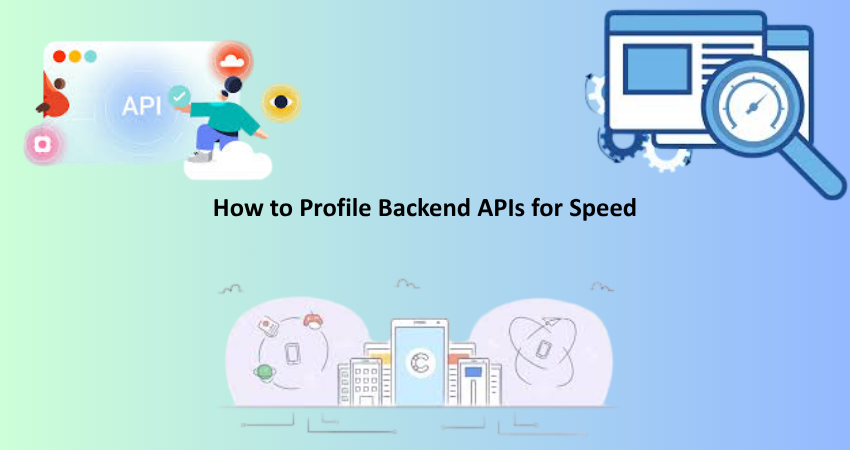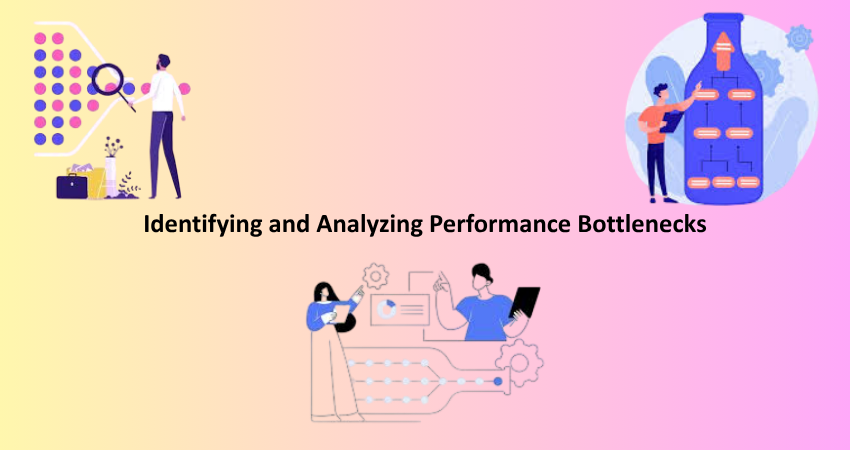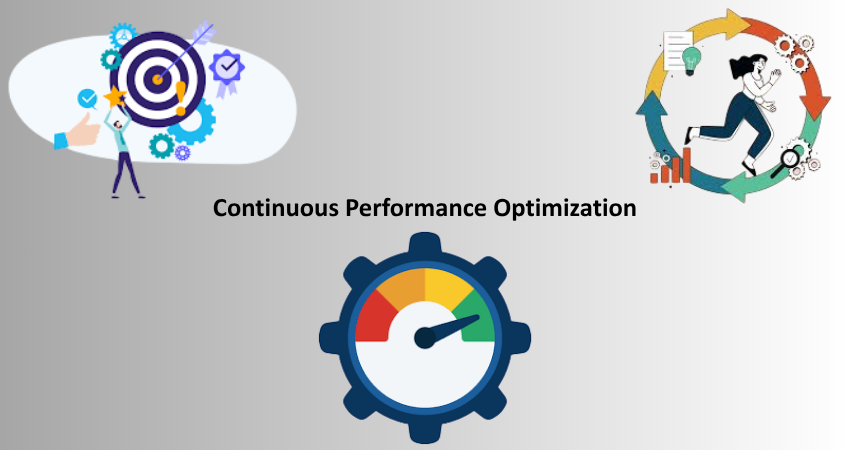
Introduction to API Performance Profiling
In the present digital scenario, backend APIs performance directly reflects on user experience, conversion rates, and costs incurred for infrastructure. Performance profiling-the systematic measurement and analysis of API behavior-comes to provide empirical data for optimizing speed, throughput, and resource consumption. In addition to simple monitoring such as that for uptime and response codes, it profiles execution paths, database access, and memory usage to really identify performance bottlenecks. This discipline encompasses instrumentation, measuring instruments, and analysis techniques altogether to give a comprehensive insight of where and why APIs slow down.
The performance bottlenecks that contemporary applications face are rapidly becoming more complex with increasing applications’ scaling. Microservice architecture now introduces network latency into a myriad of its components, database queries become more elaborate with vaster datasets, and integrations with third-party applications create little thought-about shady bottlenecks. All this makes an effective profiler help teams in guessing by actually detailing the runtime behavior of their APIs under either load or application conditions. Essentially, it suffices to say that the profiling adds the workload of performance baselines, targeted measurements to find the hotspots, and then validating all improvements with repetitive tests. So running profiling as part of continuous integration pipelines will help avoid performance regressions from ever reaching production and hence also assist architectural decisions on building more scalable solutions.
Establishing Performance Measurement Foundations
Selecting Appropriate Metrics and Benchmarks
Profiling API in more detail implies establishing the correct sets of metrics which fulfill a given set of expectations from businesses and users. These include response time percentiles (P50, P90, P99), denoting the latency distribution from one request to the other with information on how the majority of users experience performance, indifferent to sporadic anomalies. The throughput measures tell how many requests a second an API can handle before performance degradation occurs, whereas error rates under load indicate the stability limits of the API. Resource utilization measurements- CPU cycles, memory allocations, and frequency of garbage collections- justify the cost of infrastructure for an API operation and highlight optimization areas leading to reduced hosting costs.
Through being conducted under fairly realistic production workload conditions, credible benchmarks are created by measuring the APIs. Workload simulations with synthetic tests using k6 or Locust help postulate the traffic patterns, while the canary deployment smoke tests production traffic to ascertain real user behavior input. Profiling should be performed by teams on both happy paths and edge cases since error handling logics often consist of unoptimized code paths that only get triggered during errors. The understanding of API response in 200ms for 95% of the requests renders little information in terms of action if business says it needs 150ms for customer satisfaction, thereby creating actionable insights from comparing metrics against service-level objectives (SLOs). These benchmarks will become the basis against which any optimizations are made.
Instrumentation Strategies for Detailed Visibility
Full-fledged profiling would require some instrumentations that collect very rich data about the API performance without affecting the API operations greatly. For example, distributed tracing systems, such as OpenTelemetry, assign unique identifiers that can be injected into the requests as they flow through the microservices, establishing end-to-end visibility of transaction paths and latency contributions. Code-level profilers like py-spy for Python and async-profiler for JVM languages sample call stacks in execution, statistically identifying those methods that are spending too much time without the large overhead of tracing. Some middleware components that sit above the API endpoints gather timing measurements for request authentication, business logic, and serialization in order to identify places where requests tend to spend the most time.
Instrumentation is the art of achieving a perfect blend between detailed overhead. Prometheus counters and histograms allow for lightweight metric collection appropriate for the high-volume API, but heavier-handed profilers may be triggered by latency spikes. Trace IDs in structured logging allow for analysis of slow requests post-facto without the need to store full payloads. APM solutions such as Datadog or New Relic expressively combine these two paradigms to bring forth always-on monitoring with the ability to analyze user-selected performance incidents. Teams should version their instrumentation with related code changes to ensure historical performance data is always comparable across releases.
Identifying and Analyzing Performance Bottlenecks

Database Query Optimization Techniques
More often than not, it’s the database interactions that end up being the greatest bottlenecks in API profiling data. Slow queries add to the response time and may further cascade into issues with unrelated endpoints affected due to connection pool exhaustion. Profiling should, therefore, capture query timing from the application side and the execution plans from the database server. Tools should include EXPLAIN ANALYZE in PostgreSQL or Query Store in SQL Server. A common pattern such as an N+1 query (issuing many simple queries instead of one complex join) would be very clear from the tracing data as a collection of similar database calls within the duration of a single API request. Indexing strategies should be validated against actual query patterns in production, rather than hypothetical access paths.
These profiling methods for database-associated APIs, such as ovnext, include monitoring lock contention statistics, temporary table consumption, and network round trips between application servers and database servers. ORM-generated queries typically require a greater focus because abstraction levels sometimes result in an inefficient SQL statement that fails to deliver what the developer was intending. Connection pool metrics infer whether applications are wasting time waiting on database connections instead of executing queries—scaling the database will not help this problem. For example, if the API primarily does read operations, another cache hit count and replication lag profiling will prove that a secondary datasource indeed improves performance rather than complicating things.
Algorithmic and Code-Level Optimizations
Analysis on the efficiency of the algorithm and implementation details will be further investigated when the profiling indicates CPU-bound operations as opposed to I/O. Continuous profiling generates flame graphs viewing the functions that spend the most CPU cycles, thereby casting immediate attention on candidates for optimization. Memory profiling will help here by exposing high allocations, garbage collection pressure, or memory leaks that call for an API restart at regular intervals. Serialization and deserialization logic should also receive extra scrutiny, especially considering the impact on CPU and memory of choices between JSON parsers, protocol buffers, or other formats.
Performance characteristics may emerge with regard to an individual language in profiling at the code-level. JavaScript APIs might have V8 optimization bailouts because of type mixing, while Java services may show boxing/unboxing overhead in the hottest paths. Concurrency issues such as lock contention and thread pool exhaustion manifest as hiked latencies under load without a corresponding increase in CPU utilization. Profiling should usually include various implementations of the critical algorithm; caching strategy that reduces database calls, for example, may push memory pressure over the acceptable threshold. The best optimizations are usually eliminating unnecessary work rather than speeding up existing code, an insight only complete profiling can give.
Load Testing and Scalability Profiling
Designing Realistic Load Testing Scenarios
Realistic performance profiling of APIs is accomplished when one loads such a system with production-like traffic patterns rather than artificial benchmarks. Progressive load testing is by gradually increasing the request rates until performance degrades. Such testing can identify the breaking point as well as probing how failure manifests-whether it may be through increased latency, errors, or even resource exhaustion. Replay traffic tools that capture and replay actual production requests create the most exact test cases, whereas synthetic tests should model user think times and patterns during browsing instead of hammering end points with uniform requests. Session-based testing that maintains user context across multiple Api calls reveals bottlenecks in authentication systems or state management that single-endpoint tests miss.
Geographically disparate load testing reveals network-related performance problems that cannot be detected by localized testing methods. APIs that seem to work well when tested from a single region may tend to fail upon being subjected to cross-continental latencies. Multi-tenant scenarios test whether, indeed, performance isolation mechanisms prevent the noise from bothering the services of others. Chaos engineering principles need to be incorporated: load tests, where failures such as database timeouts or cache misses are being deliberately injected, would build confidence in whether the performance deterioration is graceful. The profiling data produced by these tests informs decisions about horizontal scaling as well as architectural changes for decoupling.
Interpreting Scalability Profiles
The increasing relationship between load and performance metrics tells one the scalability characteristics of the API. Under linear scalability, where response times are consistent with increased traffic, it shows well-designed systems without inherent bottlenecks. Sub-linear scaling indicates contentions for resources, typically profiling data manifesting as increasing lock waits or cache misses. Shocking sudden performance drops after crossing some limit are mostly indicative of rate limitations imposed by fixed-size resource pools or configurations. It has to capture not only the aggregate but also the outliers; there’s something about the 1% of requests that are behaving differently that usually indicates concurrency bugs or unevenly distributed workloads.
Capacity planning draws on profiling data that show the effects of different infrastructure choices on scalability. For instance, CPU profiling under load may show that moving from an interpreted language to a compiled one affords much-needed breathing room, while memory profiling may justify faster storage for working sets. Distributed tracing across scaled-out instantiates whether load balancing indeed works to distribute the effort evenly or whether some nodes become hotspot. This data will thus inform immediate scaling decisions versus longer-term architectural investment: that way performance can grow at the same rate as business; otherwise, it may turn into a fire requiring expensive rewriting.
Continuous Performance Optimization

Integrating Profiling into Development Workflows
Assuredly, considering performance profiling as a once-off exercise guarantees that APIs will become slower as more features accrue to them. Rather, profiling should be built into the standard development workflow, in pre-commit checks that flag performance regressions and CI/CD pipelines that run benchmark comparisons. Lightweight profiling may be run against every pull request with the intent of comparing critical metrics with the main branch, while in-depth analysis can be triggered for changes on performance-critical paths. Shifting left catches the aim at a stage at which it is the cheapest to fix: in development, not post-deployment into production.
Performance budgets translate profiling results into real limits: for example, 95% of endpoints need to respond in 200ms or less, or memory growth must be capped at 2% per release. Such budgets may be enforced by automated profiling tools and will fail the builds that breach the limit; developers then have to optimize their change or justify the performance regression. The profiling history is recorded against versions of code to facilitate the analysis of trends on whether certain areas are experiencing build-up of technical debt. Teams that formalize such practice circumvent the performance death spiral wherein every release requires an enormous effort in optimization just to keep the same performance.
Advanced Optimization Techniques
Advanced profiling, by throwing light on architectural optimization aimed at the acceleration of the API, is attempted toward the obvious bottlenecks. Checking the critical path looks for serial dependencies that could have been parallelized, while a finer examination into cold start performance could suggest which services need warming up. Profiling-the-one-data informs one when to add a caching layer and what level of its granularity-object, query, or endpoint-is most practical for the actual access patterns involved. When dealing with globally deployed APIs, profiling is significant in helping choose an optimal replication strategy by showing how data locality influences response times across different regions.
Optimizing systems was taken to another level with the introduction of new technologies with techniques like just-in-time compilation of hot paths and adaptive algorithms whose parameters are chosen based on profiling data. The use of machine learning models can analyze historical profiling data and predict future bottlenecks before user experience even starts to suffer from it to allow for preemptive scaling or slight changes to code. Profiling is therefore used not only by leading teams to respond to performance issues but also as the force behind architectural evolution that replaces long-standing bottleneck components or reevaluates data flows that profiling indicates are fundamentally inefficient. By this means, performance holds significance as a competitive advantage, not as a limitation.
Conclusion: Building a Performance-Aware Culture
API performance profiling integrates itself unlimitedly rather beyond technical performance by bringing about a culture switch where actual measurement is favored over hunches and progressive enhancement supersedes fire-fighting. Thus, those mastering profiling will ship faster, far more scalable APIs without having to go through a morale-sucking crisis of optimization at the very late stage. The tools and practices discussed create visibility into the runtime reality of backend systems. Instead of extrapolated conclusions for scope overheads versus business outcomes investments, the ones derived from them will be very data-driven in nature.
Sustainable performance requires embedding profiling into every stage of an API’s lifecycle-from initial design all the way through ongoing operation. Developers should take into account how their coding decisions will affect performance, testers should validate performance as well as functionality, and operations teams should be on the lookout for deviations in profile performance. Performance becomes everybody’s responsibility-armed with appropriate tools and cultural expectations-then these APIs will continually evolve and grow to meet increasing demands without sacrificing the all-important responsiveness. What you therefore have is software that will work correctly-perhaps deliver a wonderful experience but certainly large-scale.